Tassie’s late summer months are often our most settled weather. Long warm days can give hours of quality fishing from dawn right through to well after dark. These warmer months can literally make for 24 hours of fishing and using a variety of methods to tackle different parts of the day and night.
The fly angler can find a feast of activity from lowland streams to our highland backwaters. Chasing any rising fish is visually exciting, but the aggressive beetle and spinner feeders are a highlight for me. The frenzied activity of trout during often short-lived spinner hatches can be something to behold.
The most memorable session I can recall was a few years back at the Julain Lakes in Tassie’s Western Lakes region. A long hot day saw a few fish falling to the regular red tags during the day. After a lull, a day where not a great deal of duns were seen gave way to one of the most prolific black spinner hatches I have ever witnessed. After the initial surprise and time spent just watching the fish appear in their dozens, we managed to land a few, and while it was difficult going with all the food on offer, seeing that many feeding fish was amazing.
One of favourite summer waters, Lake Pedder, is not so rewarding when spinners appear late in the afternoon. The lake’s small trout go into their own frenzy and seemingly thousands of them leap about the margins. Entertaining as it is, it is also a very difficult time to find the better fish.
The remainder of the day, however, offers some exceptional fishing. Pedder has something to offer everyone. And it’s not just the fishing experience. The scenery here ranks with the best in the world for its rugged and majestic beauty.
The early morning midge feeders can be both challenging and rewarding. You will not find bigger or longer wind lanes or for that matter fields of midges anywhere else in Tassie. This is not always ideal, as it gets hard to target a feeding fish in a field of midges 500m wide and extending off in the distance out of sight. Instead, you are better off finding a nice point or shore in one of the many inlets or passages littered with numerous islands where there will be a perfect spot to ambush fish patrolling the beat.
Hermit Basin, or McPartlans as it is known by devotees, is conveniently the first piece of Pedder you see as you travel the road to Strathgordon. It also has a boat ramp right beside the road too. McPartlans is one of the most consistently rewarding regions in the lake. The multitude of bays, channels and islands always offer something. The wind from anything from a gentle breeze up will funnel food around the island through the channels, creating long and consistent wind lanes loaded with midges and more importantly, feeding trout. Targeting these with olive Klinkhammers, or even just an oversized black spinner or midge pattern will usually result in a take.
As mentioned, out in the main lake it’s a little harder to get fish to see your fly. Try something bigger than average, giving them a reason to eat it.
Pedder is rather unique in that the fish will actually take a well-presented lure. A small, bibbed minnow will find results and a black and gold or the rainbow trout pattern coloured lures work very well on these fish cruising the lanes.
As the day progresses, the wind lanes that are going to stick around in the prevailing winds will soon become obvious. Late morning, after the midge-feeding trout have long vanished, will see fish starting to cruise the lanes often kilometres long, picking off food as they go. A large black spinner pattern is very successful in this scenario, and I usually team that with a red tag or a Greenwells Glory or something similar. The fish aren’t easily sighted in the tannin stained water, but their tell-tale rises as they feed can be used to track them as they move.
As the day heats up, the damselfly and dragonfly activity rises with it. The sun’s rays warm the water, penetrating through the shallows, and this triggers the nymphs of both species to head to the surface. For me, this is the highlight of the fishery, mudeye fishing. Find a shallow bay or shore and you are going to find activity. An intermediate or sink tip line with a mudeye pattern and you’re away. I tend to fish just one fly as there are far too many sticks and drowned tea tree everywhere to foul or lose the fly on once a fish is hooked. The action at times can be sensationally thick and fast. The bays in Wilmot Bay and Hermit Basin are perfect for this style of fishing. It can also be extremely rewarding to drift the deeper banks with a team of dries, and I like to add a Zulu in the mix along with those already mentioned. Some solid fish can be found this way.
Extending into the evening, the mudeye technique continues but switching to a floating line and buoyant fly is a good move. You can use this technique successfully from dusk right on through the night for as long as you want to stay on the water. Listen for rises and cast to the vicinity. Otherwise, just cast to the banks and retrieve to the boat using short pulls as the mudeye swims by, pushing water out its body.
The beauty of Pedder adds to the attraction of the place and the multifaceted angling methods also play a big part. Despite the excellent fly fishing, the lure fishing is exceptionally good. Casting hard to the shores and retrieving to the boat is a deadly method.
A lot of these methods cross over to another favourite summer waterway in the highlands, Great Lake. Midge feeders in the mornings are some of the best and most consistent ‘up top’. Hit the water before a hint of light on the horizon and you’re ready to hit them. They’ll start to appear just as you can make out the rises.
Casts need to be accurate, leading the fish by roughly the distance between rises. You need the fish to be coming up about where your fly is on the water. These feeding fish tend to not be overly reactive to a fly hitting the water, therefore you need to land it where they are looking. I fish a small midge teamed with a larger sighter, still small enough to tempt the trout.
The morning session can be unrewarding, so the best bet is to fish the windward shore with plastics and hardbodied lures, casting in very close and retrieving back to the boat. The central highlands tend to be a black and gold fishery and if that’s not working, I like a clear body with a brown back. Both are very consistent trout catchers.
As the sun climbs, it’s time to head away from the shores and chase the infamous Great Lake sharks. Most people are familiar these days with the terminology and technique involved.
For those who don’t, firstly, you need wind, obviously not ridiculous amounts but enough to get the gum beetles on the wing. Hot windy days are the best. The trout cruise into the wind searching mainly for beetles, but all sorts of terrestrials that are blown out across the lake as well. A boat with a casting deck is a must as this gets you high above the water, increasing your vision.
You will soon learn to tune your sight in, looking through the waves for any sign of a trout. This is very visual fishing, and you’ll most likely see the fish in the water before any sign of a rise downwind. They stand out quite easily in the crystal clear Great Lake water. The trout swim up wind lanes mainly, but any froth line is worth your attention as they both gather and concentrate food.
Bright orange and olive colours should be what you’re looking for with your flies. Casting a gum beetle pattern, red tag, Chernobyl ant and hopper pattern will all bring results. These trout are opportunistic and will eat most things in their path, unless you spook them. If you spot one close to the boat, just try to get the fly in front of it and get down low on the boat.
After the excitement of a long hot day, you can guarantee the evening rise is going to be pretty good. Swan Bay is as good as any other spot on the lake. Rainbows are dominating the last part of daylight and then the browns take over after the sun disappears behind the horizon. A large dry seems to work okay on the cruising fish mopping up the last of the terrestrials from the day. As darkness descends, it’s surface time and this technique can return some of the best trout for the season. On calm, mild nights, you can find yourself on the water for hours. It’s very pleasant and rewarding. There’s nothing better than hearing a solid fish roll on you fly in the dark of night.
Some great dry fly fishing can be had out back in the western lakes with thousands of waters literally at your disposal. Gin clear shallow water and trophy trout is the lure for anglers to head to the more secluded lakes and tarns. Some great fishing can be had much closer to the car parks, but if you want to get away from it all, then a wander on foot is required.
Gum beetles and their often-scarce jassid friends are a feature of many of our central lakes. In recent years jassid falls have been exceptionally good. My favourite waters for solid and regular gum beetle falls are Dee Lagoon and Lake St Clair.
When there is a carpet of beetles on the water and not a fish to be seen, it generally means you’re too late. The best thing to happen is a period of cold weather, four or five days is ideal, then a nice warm day with a mild breeze. A build-up of beetles in the eucalypts will release in the heat. Watch the weather and it pays to be on the water ready to roll if you’ve planned it well. Both waters offer great early morning midging, although I’m yet to ever crack the code at the Dee personally, so it makes sense to be on the water early anyway.
As the weather warms, the beetles will start to take to the wing. Blown by the breeze they fall on the water. The trout won’t take long to switch onto this and begin to cruise into the wind, picking them off the surface. These next to perfect conditions happen every so often, and we experienced one such day on Dee Lagoon a few years back. A very hot day was forecast and in the morning it was sweltering. This certainly got the beetles active then out of nowhere for about an hour, it blew very hard. Almost as instantly as it began the wind eased to a light breeze and the beetles came out of the trees at a steady and constant rate. We had a crazy afternoon on the water and the fish kept coming over the side. We drifted the shores in Mentmore Bay and the rainbows we were catching could be seen cruising up the lines as easy as you like. You could see them from 50m away and a careful cast and patient strike was all it took. It was truly one of the most memorable days I’ve had on the water.
Also in the region are Echo, King William, Bronte and the Bradys Chain, and all offer fantastic beetle falls. Lake Echo is probably the most underrated. It too is an exceptional fly fishery but also excels for the lure angler. During the summer months fishing deep over the many weedbeds in the tree lines and northern bays with your favourite soft plastics will bring very good results. The reliable black and gold T-tails are fairly consistent fish takers here. The inflowing Monpeelyata Canal can fire things up if it gets any water at this time of the year. Rainbows are high on the catch if the water starts to move. There’s also fantastic midge fishing early in the open water around the Bull Bank, which is high and dry in current water levels.
King William is another that performs well with both fly and lure in warm weather. It’s not much fun chasing ‘oncers’ (fish that rise only once) all over a big lake but the breeze will push the food to one shore. At King William, the fish are wise to this and no doubt as food is a competitive business they take what they can and feed aggressively. This results in good takes and minimal refusals. Lure fishing is rewarding and once the fish enter mop up mode they’ll take a well-presented small lure, even when fixated on beetles and small insects.
Gum beetle and red tag patterns on the Bradys Chain of lakes can turn the somewhat underperforming waters in recent years into great fisheries when the trout are feeding on top. All lakes are surrounded by eucalypts and invariably some excellent falls occur regularly.
It’s also prime time for fishing well after dark on some of the Derwent hydro storages. The inflows from the power stations are hot spots for big trout that are smart enough to know that it’s easy tucker and a pretty casual life having the food delivered to you.
In the daytime, large soft plastics account for good fish in the fast water, but after dark, fishing just outside the strong flow with surface lures is dynamite. Big scented soft plastics will still account for fish, but the best ones will fall for a surface lure drawn across the current. I prefer the stickbait shapes as they are easier to get a nice ‘walk-the-dog’ action going on the surface. Others with a soft cup on the nose will attract attention too, and create that characteristic plop on the surface, which is often irresistible to a big trout. Wayatinah, Catagunya, Cluny and Repluse all have big fish that aren’t so easy to catch in the daylight hours.
Our lowland streams often suffer from low flows in late summer, but the more consistent streams and rivers give enough to be worthwhile choices for the late summer angler. The north of the state has far more options than the south. That said, some of the southern waters are fantastic options. The Tyenna, Upper Huon, Weld and Little Dennison all offer great fishing at times. The trophy-sized trout of the Tyenna are probably not on the menu at this time of the year, but lacking in numbers they aren’t. Excellent caddis hatches anywhere there are tea tree bushes will see some sort of activity. With warm water, drifting a small nymph under an indicator will also yield results.
Bigger pools can be targeted with small lures, spinners or plastics. Shaded pools are also likely to increase your catch rates, and fish can also ben found high up into bubble lines right in the fast water behind rapids. In very warm weather, the rapids introduce some much-needed oxygen to the water and the fish will sit here behind rocks and boulders or at the head of the pool in the flowing water.
In the north, all the usual suspects will be worthy destinations. Mersey, South and North Esk, Macquarie and St Pats are great waters. At the right time of the year the willow grub feeders are high on the radar for anglers, and late summer will see a lot of insect life having trout looking to the surface. Reports across the last few years have seen a great mix of fly fishing and lure casting. Very small bibbed minnows and spinner style lures consistently seem to produce results.
The banks of the Leven River have always been inviting for me on a trip north from Hobart. It’s a great looking river with some nice pools and runs as it meanders through the valley. I see a lot of great reports from anglers who regularly fish it throughout the year on the various forums and social media networks.
As the weather starts to cool coming out of summer and into autumn, you still may find a few good beetle falls on warmer days, but for me it’s time to turn to lure casting once again. This time of year particularly in Tassie, as we move into the last month of the trout season you want to add something bright to your colour choice. I stick with black and gold, but it’s imperative you have a bright fluoro orange belly. The fish are beginning to think about spawning time and that means feeding up ready for the energy-sapping journey upstream. All fish need to add bulk, as there is little feeding happening once they enter a spawning stream.
The bright orange does a couple of things in my mind. They are far from scientific, but to me they are sound and confidence is the best lure in the tackle box. Fish are competing for food and the bright orange produces an aggression strike. It’s also the colour of fish eggs and we are nearing spawning time.
Lastly, but perhaps most importantly, if you believe the research, fish see UV colours very well and flouro orange is just about the best natural UV signature you can get. You might be surprised at just how many lures have UV paint on them. Get yourself a UV torch and check out your tackle box. Some of your favourite colours are most likely UV enhanced.
We’re getting closer to the spawning times, so concentrating on inflows will increase your chances, but be sure to check your local and water specific regulations, as some are off limits completely and others have exclusion zones.
So get out there and explore some of the world-class trout fisheries that we have before the trout head up into the spawning streams!
Reads: 4433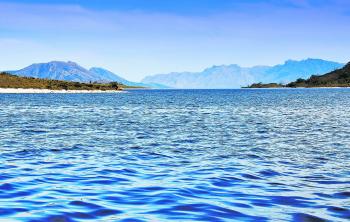
Pedder wind lanes for miles, but how about that view?

The big fish come out after dark! Sleep deprivation and limited vision are worth braving for monster like this!
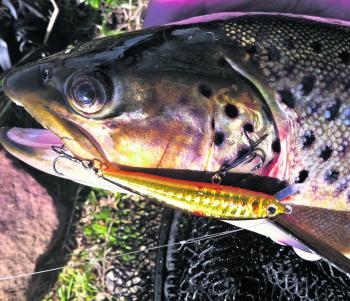
A late season brown on the trusty black, gold and orange.
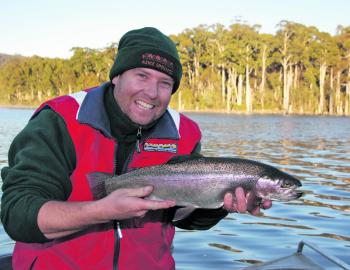
A last minute midge feeder in the shade before the sun puts them down at Dee Lagoon.

This nice fat end of season brown fell to the hot pink colour!
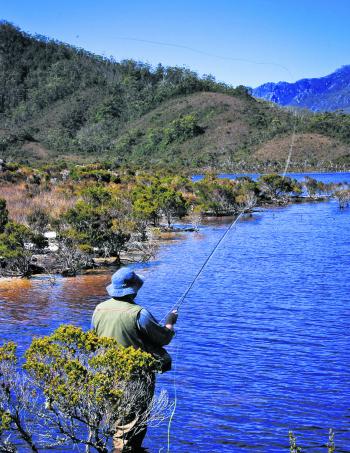
Chasing mudeye feeders on this typical Pedder shore on a bright and hot day.
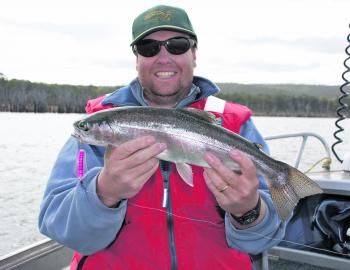
A nice 750g Lake Echo rainbow trout that took a #55 Tassie Devil late in the season.
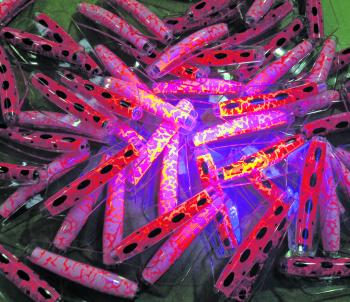
UV glow to put on your Tassie Devil lures is a good investment.

Until the fish start to show, a wet fly fished deep over weed beds will often bring success like this big Woods Lake buck.
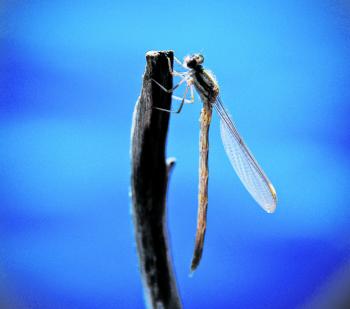
The damsel fly nearing its adult stage. Just hatched and drying its wings ready to take to the air.

Tassie is famous for its summer fly fishing and they don’t come much better than this perfectly coloured brown trout.




